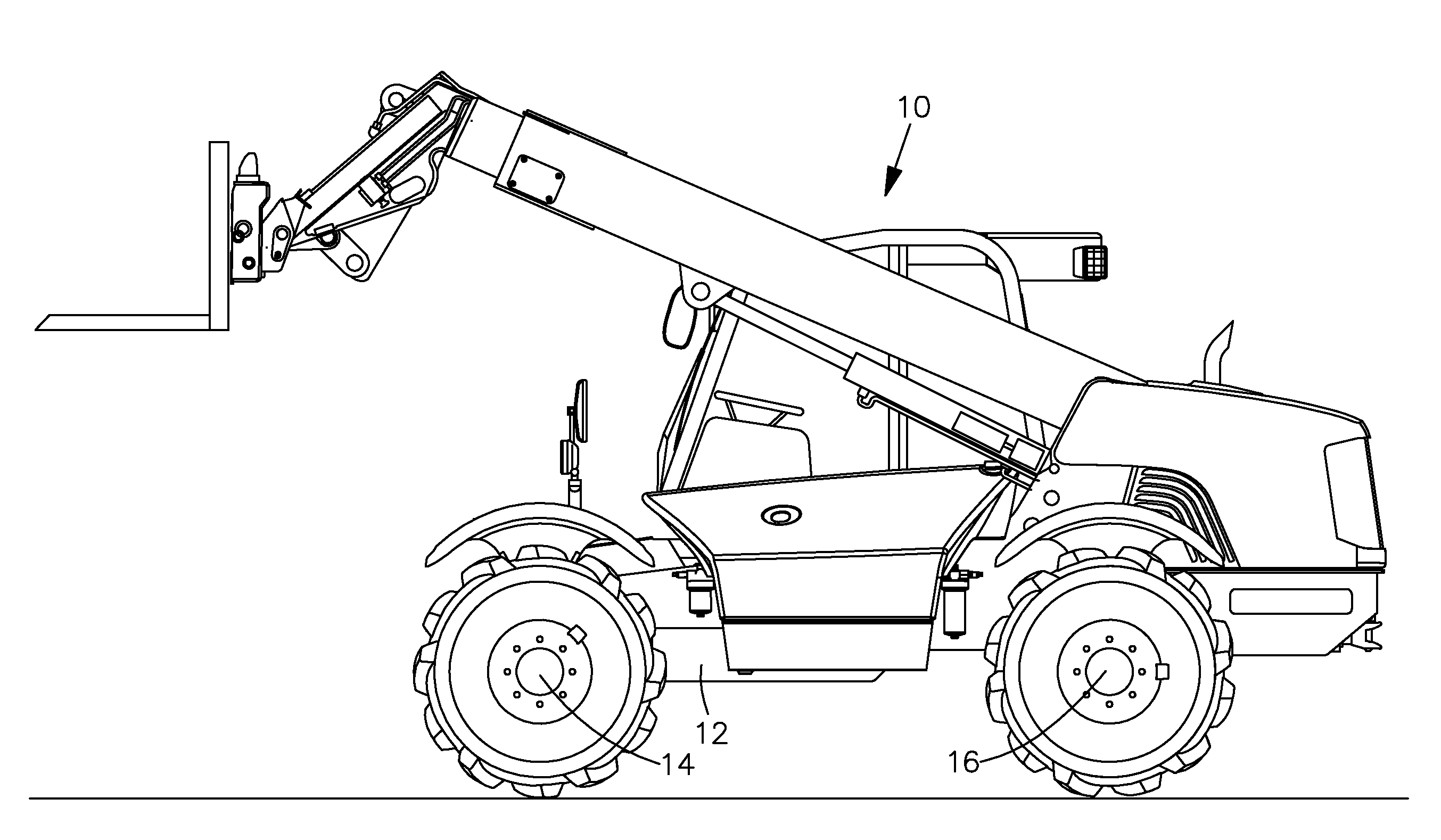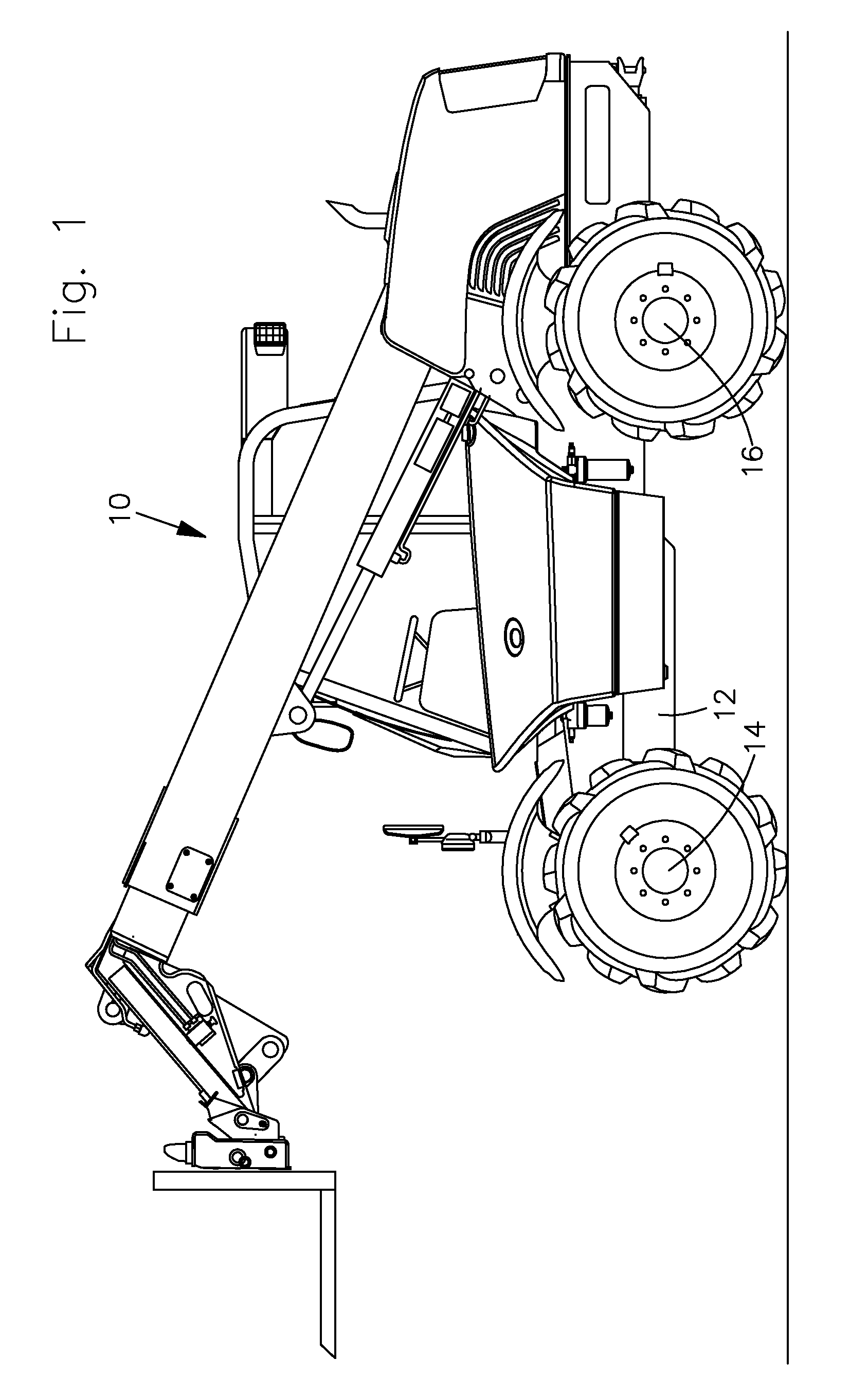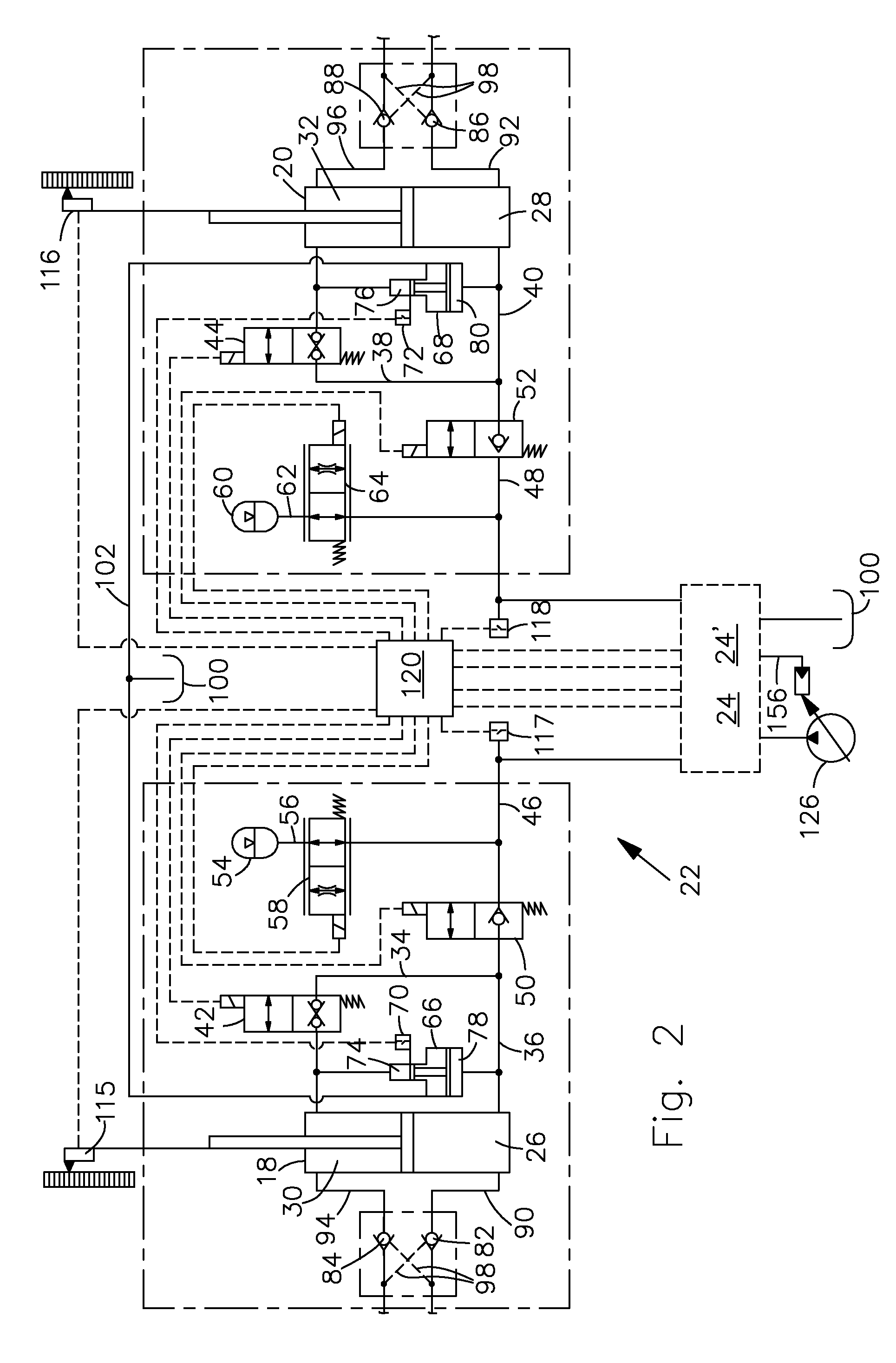Suspension System
a suspension system and suspension technology, applied in the direction of pedestrian/occupant safety arrangement, transportation items, tractors, etc., can solve the problems of vehicle overturning, vehicle overturning, frame tilting, etc., to reduce the impact on the overall structure of the vehicle, and increase the life of load-bearing parts
- Summary
- Abstract
- Description
- Claims
- Application Information
AI Technical Summary
Benefits of technology
Problems solved by technology
Method used
Image
Examples
Embodiment Construction
[0031]FIG. 1 shows an agricultural vehicle 10 in the form of a telescopic loader, which has a frame 12, a front axle 14 and a rear axle 16. The rear axle 16 is floating, as is usual for telescopic loaders. The front axle 14 is sprung in such a way that hydraulic cylinders 18, 20, which are part of a suspension system 22 with hydraulic roll stabilization, explained in more detail in FIGS. 2 to 6, extend between the frame 12 and the front axle 14, on either side of the vehicle central longitudinal axis. Similarly, the front axle 12 could also be floating and the hydraulic cylinders for suspension of the rear axle 16 could be correspondingly arranged between the rear axle 16 and the frame 12. It is also feasible to use such a suspension system 22 on a tractor (with or without front loader), a wheeled loader or another loader vehicle.
[0032]The suspension system 22 will be described in detail with reference to FIGS. 2 to 6, the system components for the load state sensing being represent...
PUM
 Login to View More
Login to View More Abstract
Description
Claims
Application Information
 Login to View More
Login to View More - R&D
- Intellectual Property
- Life Sciences
- Materials
- Tech Scout
- Unparalleled Data Quality
- Higher Quality Content
- 60% Fewer Hallucinations
Browse by: Latest US Patents, China's latest patents, Technical Efficacy Thesaurus, Application Domain, Technology Topic, Popular Technical Reports.
© 2025 PatSnap. All rights reserved.Legal|Privacy policy|Modern Slavery Act Transparency Statement|Sitemap|About US| Contact US: help@patsnap.com



